| I only
managed to see films at
the Empress Hackney on
five other occasions.
Needless to say, I did
try to get into see
others but the A-Certificate
and the inability to
find someone to take
me in limited my
successful visits. The
first time I went after
seeing How to Marry a
Millionaire, was to
see A Man called
Peter. Being young at
the time, I fear that I
did not go because I was
an admirer of the
film’s main
character, the theologian
Peter Marshall, I went to
see Jean Peters, someone
that I considered to be a
voluptuous beauty that I
knew from other films.
A
Man Called Peter
is the story of a
Scotsman who emigrated to
America and eventually
became the Chaplain to
the Senate. Richard
Todd played the lead and
was obviously trying
his luck in Hollywood after
having made Walt
Disney’s first
feature length film, Robin
Hood. I was such a cultural
snob as a child, as I
had refused to see him in
The
Dam Busters.
I disliked English
films at that time
and found films
photographed in black
and white to be
old-fashioned and of
little interest. I regret
to say that my tastes
favoured flashy Hollywood
films and I demanded Technicolor!
The more spectacular
a film, the better I
liked it. Thank goodness
one’s tastes change!
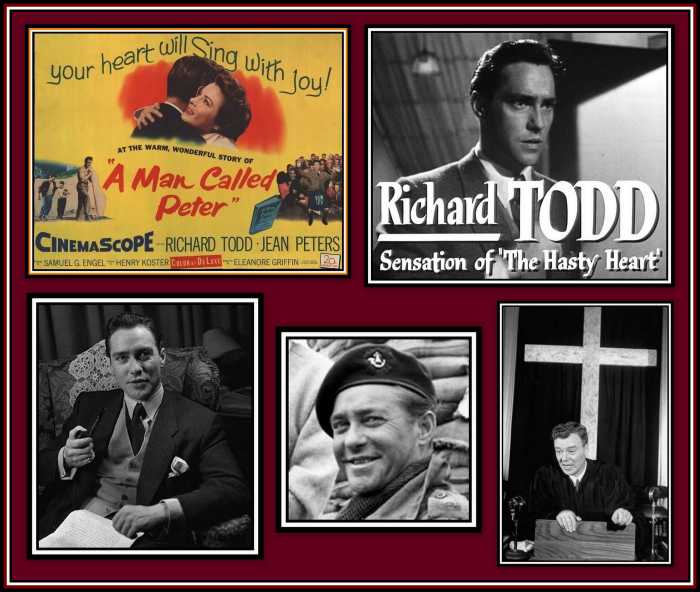
Bottom
right: Peter Marshall
I had
taken an immediate liking
to Jean Peters as Anne
of the Indies. The
combination of her charms
and playing a pirate
proved too potent for a
young boy and immediately
heralded her entry to my
list of favourites.
However, like so many great
loves, besides
bringing me pleasure, Anne
of the Indies sadly
had its tragic side. The
conclusion of the film
caused me much sadness
since she was killed in a
sea battle. At my young
age, I was not ready for
heroines to die. I needed
much comforting at the
time. This was the first
film I saw at the Foresters
cinema on Cambridge
Heath Road. The
cinema had been closed
for a number of years
following bomb damage
sustained during the
Second World War. The
cinema was part of J.
Arthur Rank’s
Gaumont chain and had
been freshly renovated.
Despite its more swanky
appearance, I believe
that Anne’s
untimely demise was
the root cause of my
never really caring for
the Foresters cinema
despite its newly found grandeur.
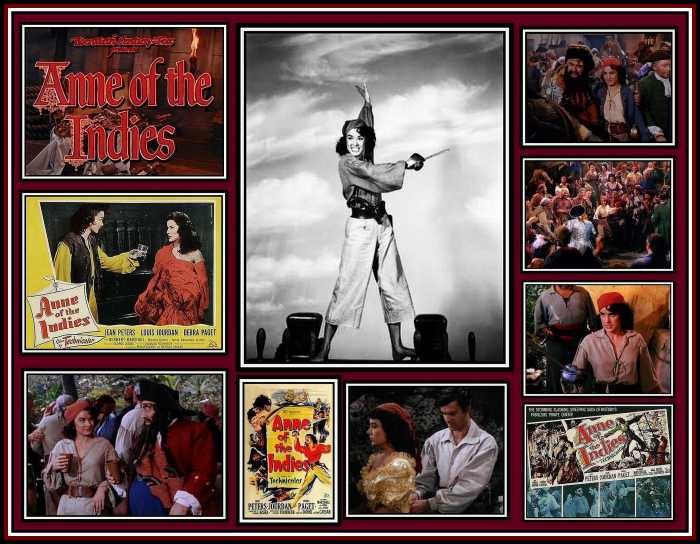
As I said,
the allure of Jean Peters
and CinemaScope proved
too much for me to resist
and despite my promising
myself never to go to the
Empress Hackney without
telling my parents, I set
off to see A Man
Called Peter. It had
not been too long since I
saw Ms Peters hurling
coins into the Trevi
Fountain in the
film, Three
Coins in the Fountain
at the Essoldo
Bethnal Green. As
silly and as
not-especially
interesting to a young
boy as this film may
appear, it introduced me
to the grandeur and
beauty of Rome. Who says going
to the pictures is
not educational?
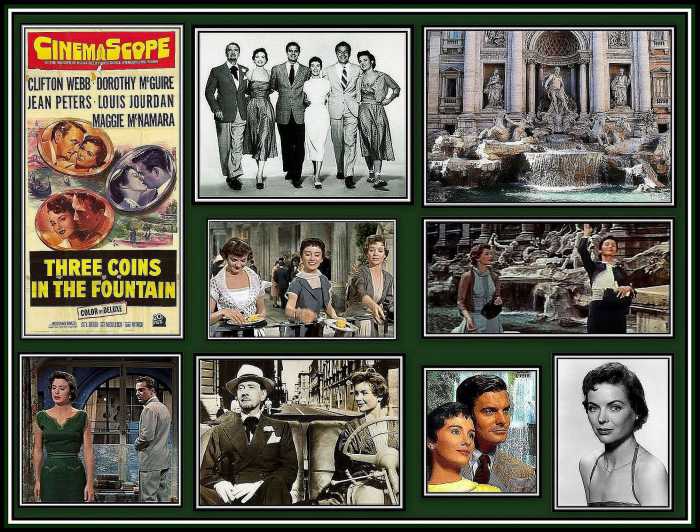
(Click
on the collage to see a
video clip from the film)
An
incidental point
regarding Three Coins
in the Fountain is
that it was one of the
few films made by Maggie
McNamara who had a short
and somewhat tragic life.
She had previously
starred in the film, The
Moon is Blue, which
was directed by Otto
Preminger of Carmen
Jones fame. The
Moon is Blue gave the
censors in the United
States headaches thanks
to the use of the word, virgin,
in the dialogue.
Apparently in 1953, the
word was found to be
objectionable and ruffled
the feathers of many
groups determined to
safeguard society’s
welfare. In the U.K., the
film was given an X-certificate
and so entry to
anyone under the age of
16 years was restricted.
Naturally to all us kids,
the handing out of such a
certificate made the film
totally fascinating to
us. I remember finding an
adult that actually saw
this film and I asked her
for a potted account of
the plot. She told me in
no uncertain terms that
the film was one long
bore and that she and
her man friend got up
and walked out after
an hour of this
rubbish.

(Click
on the collage to see the
film's trailer)
Maggie
McNamara also starred in
another of those 20th
Century Fox CinemaScope
films that was never
shown at the Essoldo
Bethnal, but which
enjoyed screenings all
over London, including
the Empress Hackney. This
film, Prince of
Players, starred
Richard Burton as Edwin
Booth, the brother of
John Wilkes Booth, the
man who assassinated
President Lincoln. The
Booth family were
successful actors and
Edwin was considered to
be the greatest
Shakespearean actor of
his era. I did not see
this film until 1993,
thanks to the television
channel, Cinemax, in
the United States. The
career of Ms McNamara did
not fare well after her
initial success and
several years later she
was living in New York
and supporting herself as
a secretary. Evidently,
she had a history of
mental illness and in
1978 she committed
suicide.
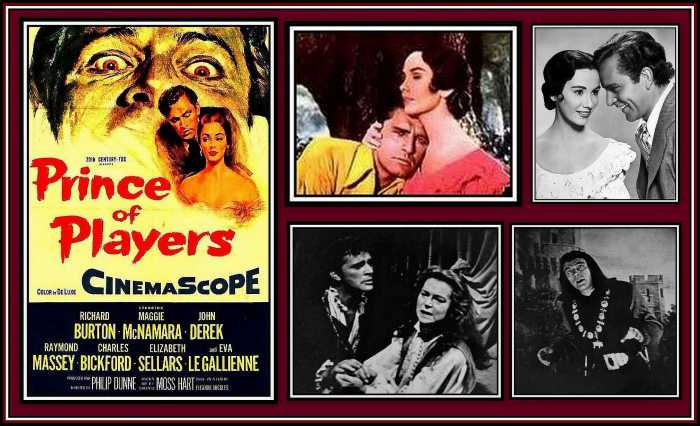
(Click
on the collage to hear
the theme music of the
film)
Although I
did not know it at the
time when the film was
first released, Prince
of Players was one of
the few films in which
Eva Le Gallienne, an
Anglo-American actress of
note appeared. In 1981,
without realising who Ms
Le Gallienne was, I had
been lucky enough to see
her in her last role on
the Broadway stage in
1981. The play, To
Grandmother’s House
We Go, was not
especially well received
and closed after only 61
performances. Despite the
play not being memorable,
I was impressed with her
performance, but it was
not until I read her
write-up in Playbill that
I realised who she was.
It is interesting to note
that she starred in the
original production of
the play, Liliom, playing
the role of Julie.
Liliom was that play
that Rogers &
Hammerstein set to music
and renamed as Carousel.
Ms Le Gallienne was
both a talented actress
and an extremely
colourful and
controversial person.

Eva Le
Gallienne
(Click on
the collage to see a
video clip from her last
film)
The next
film I saw at the Empress
brought me a great
deal of trouble. I was
going to be allowed to
visit a friend of mine on
a Saturday afternoon who
lived some distance away
on the other side of Hackney.
I was going to be
allowed to go there alone
on the 653 Trolleybus.
Naturally my parents
thought that this was
going to be the first
time that I had made this
journey alone. I had been
given strict instructions
about how to get on and
off the bus and told to
wait for the bus to stop
before I got out of my
seat. I was also given
strict instruction to sit
close to the exit and to
tell the bus conductor
where I was going.
Finally I was given a
time when I should be
home, which I promised to
keep. I remember that my
friend and I went to the Empress.
Unfortunately we went
to the second showing and
so came out of the cinema
well after the time that
I should have been home.
Naturally I found my
parents both worried and
furious when I finally
got home. I had no excuse
for arriving so late. I
told them that I had been
to the cinema. This only
made them more angry and
upset, since I had
already been taken to the
cinema by them earlier in
the week. I received a smacking
from my father and that
hurt look from my
mother. It took me the
whole of the next day to
receive forgiveness from
her. I had to promise never
ever to do what I had
done again. I have to
admire my parents as they
never grounded me
or whatever it is parents
insist on doing today and
was allowed to go out
again without them and
even to Hackney to
visit my friend. However
when it came to clandestine
trips to the Empress,
I was careful not to
bring them grief again. I
learned that it was best
to keep what I was doing
to myself and to be
certain to return by the
allotted time.
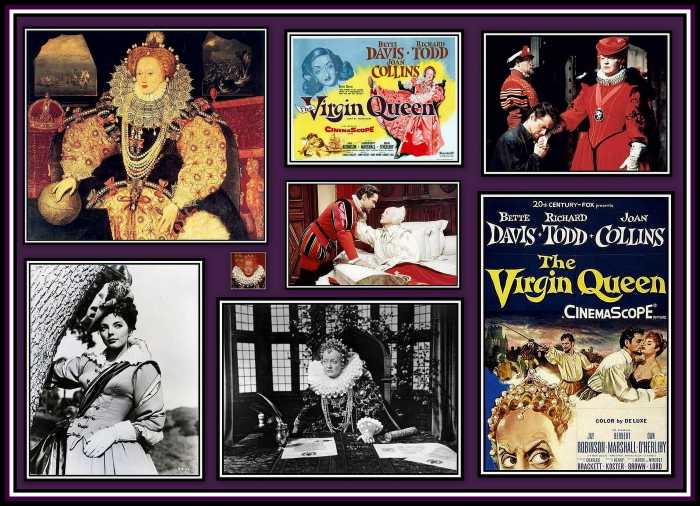
(Click
on the collage to see the
film's trailer)
The film
that we saw on that
Saturday was The
Virgin Queen. The star
of the film was Bette
Davis, who reprised here
her role of Queen
Elizabeth I. The film
is of mild interest today
if only for her
portrayal. The film also
starred, yet again,
Richard Todd, this time
playing Sir Walter
Raleigh who brought back
both tobacco and potatos
to Europe and who laid
his cloak down for the
Queen to walk over, along
with Joan Collins and
Herbert Marshall. To be
honest, the enjoyment
gained from this film was
in no way worth the
resulting grief that it
brought me.
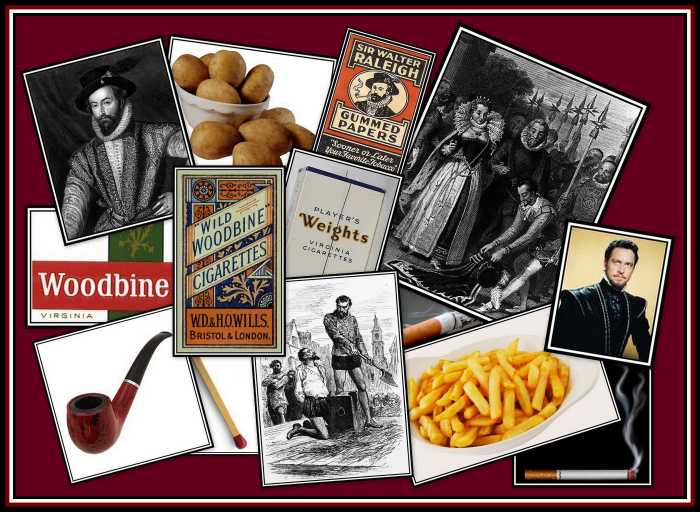
As a
child, I was very fond of
swashbuckling films.
I liked Knights in
armour, pirates and court
intrigue. I remember
seeing Errol Flynn at the
Empress in The
Dark Avenger. This
film had different titles
over the years, but this
was its name when I saw
it. It dealt with a
knight who I later
learned was The Black
Prince and who went
into battle incognito since
he wore dark armour and
hid his face. I have
since seen this film on
television and was
surprised to see how
terrible it was. However,
at the time, it fitted
well into my likes and
so I was pleased to spend
a happy hour or two lost
in the world of
Plantagenet England.
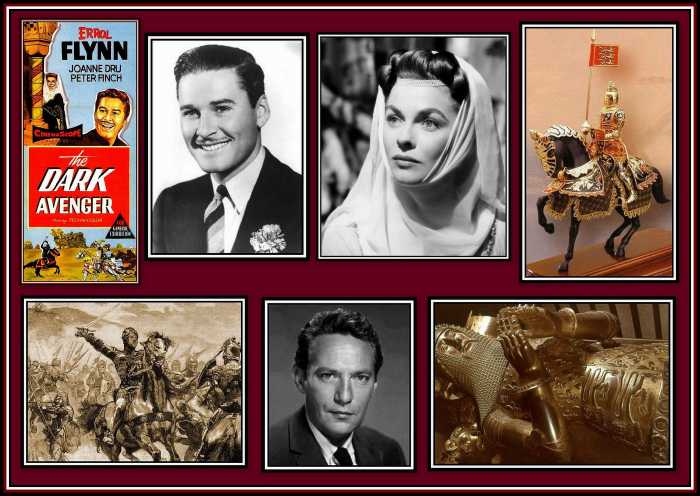
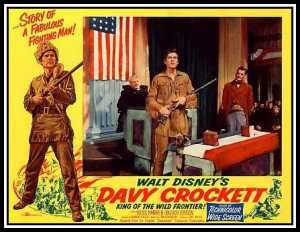 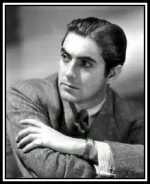 I
remember going to the Empress
with a young couple,
Freda and Bill, who were
regular customers at the pie
shop and friends with
my mother. Freda had
occasionally looked
after me whenever my
parents had to go out and
I was not allowed to
accompany them. One such
time was when my parents
went to see Tyrone Power
in Mister Roberts.
I was more than a bit
miffed at being left
out of this outing.
However Freda made the
evening very nice for me
and I was grateful to her
for it. I was very fond
of her and she used to
hold my arm whenever we
went out, which made me
feel very grown up. She
used to joke that she was
in the company of her two
favourite men, as she
walked down the street
arm in arm with Bill and
me. She came from
Newcastle and had a
strong accent, which I
found delightful. They
took me to the cinema
from time to time. I also
remember seeing Davy
Crockett at the Excelsior
with them, which I
think they enjoyed more
than me! I
remember going to the Empress
with a young couple,
Freda and Bill, who were
regular customers at the pie
shop and friends with
my mother. Freda had
occasionally looked
after me whenever my
parents had to go out and
I was not allowed to
accompany them. One such
time was when my parents
went to see Tyrone Power
in Mister Roberts.
I was more than a bit
miffed at being left
out of this outing.
However Freda made the
evening very nice for me
and I was grateful to her
for it. I was very fond
of her and she used to
hold my arm whenever we
went out, which made me
feel very grown up. She
used to joke that she was
in the company of her two
favourite men, as she
walked down the street
arm in arm with Bill and
me. She came from
Newcastle and had a
strong accent, which I
found delightful. They
took me to the cinema
from time to time. I also
remember seeing Davy
Crockett at the Excelsior
with them, which I
think they enjoyed more
than me!
(Click
on the poster to hear the
film's theme song)
We went to
the Empress to see
The Lieutenant Wore
Skirts. This film
starred Tom Ewell and
Sheree North. 20th
Century Fox had the
habit of pairing Tom
Ewell with voluptuous
women. He had appeared
with Marilyn Monroe in The
Seven Year Itch prior
to this outing and later
with Jayne Mansfield in The
Girl Can’t Help It. In
the mid-1970’s, he
played in the television
series, Beretta with
Robert Blake and a
cockatoo. I am afraid
that his acting abilities
were lost on me.
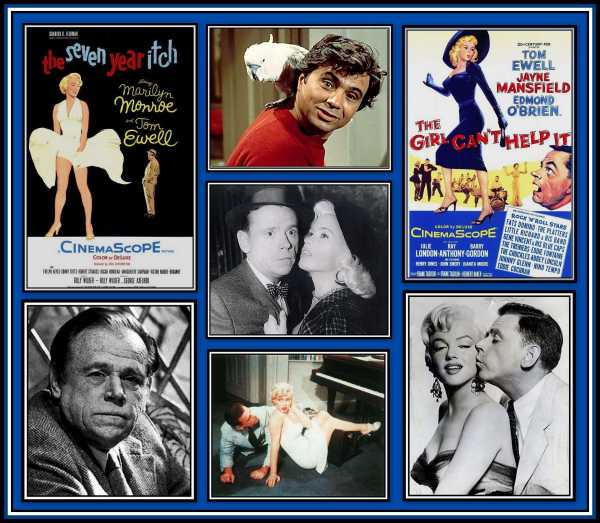
Tom
Ewell
(Click on
the pictures above to see
video clips)
Sheree
North came to prominence
as a result of studio
difficulties between 20th
Century Fox and
Marilyn Monroe. When Ms
Monroe refused to appear
in How to be Very,
Very Popular, which
also starred Betty Grable
and Robert Cummings, she
was suspended and the
role given to Ms North.
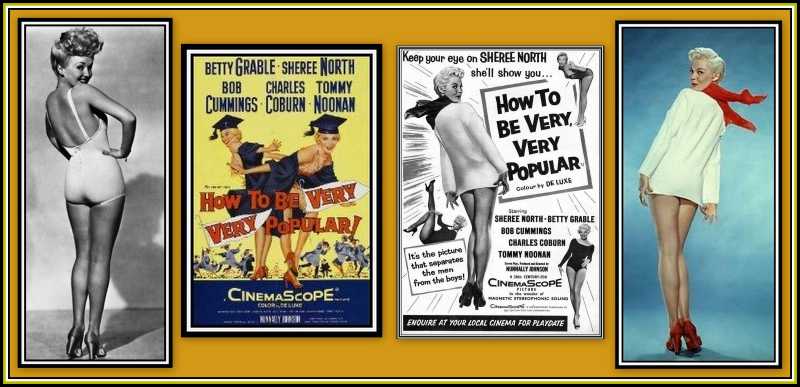
Sadly for
Ms North, she received
few roles of substance.
Her most obvious success
came several years later
once she moved to
television where she
became Very, Very
Popular on The
Mary Tyler Moore Show where
she played a girl friend
of Lou Grant, the
gruff editor of the
news in the
story-line. His wife had
divorced him sometime
earlier and, once
encouraged to date,
Mr. Grant proves
to be very shy with
women. After a number of
attempts at dating, he
meets Charlene
Maguire, a lounge
singer played by Ms
North. There is one
especially charming scene
between the two
characters where Mr.
Grant learns of Charlene’s
past. Feeling a
certain inadequacy, he
decides to end their
relationship. Charlene
understands the
situation only too well
and handles it with tact
while remaining true to
her character and
offering him no apology.
I was very taken with her
in this role. She
obviously had depths not
tapped by Hollywood.
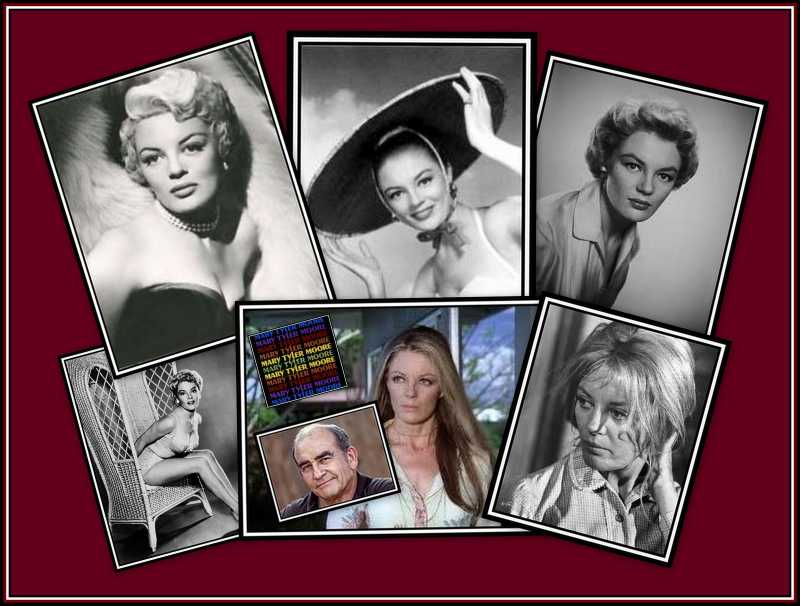
Bottom
Centre: Sheree North
as Charlene Maguire with
Ed Asner as Lou Grant
(Click
on picture to hear the
theme song of The
Mary Tyler Moore Show)
The
Lieutenant Wore Skirts is
the story of an older man
married to a younger
woman who believes he is
to be recalled to the
military. He goes for his
physical examination and
interview and either
realises that he is too
old for such a life or
else is refused.
Meanwhile, his young and
very attractive wife
decides to join the army
herself, as a surprise!
As the adverts said, and
it was a surprise to him!
She becomes the lieutenant
wearing skirts and
they get posted to Hawaii
where her husband becomes
a house husband and
all kinds of silly
situations develop. The
reader should remember
that this film is from
the mid-1950s and so the
story-line was considered
racy by the
Americans at that time.
Even at my young age, I got
the premise, and
yawned through it all.
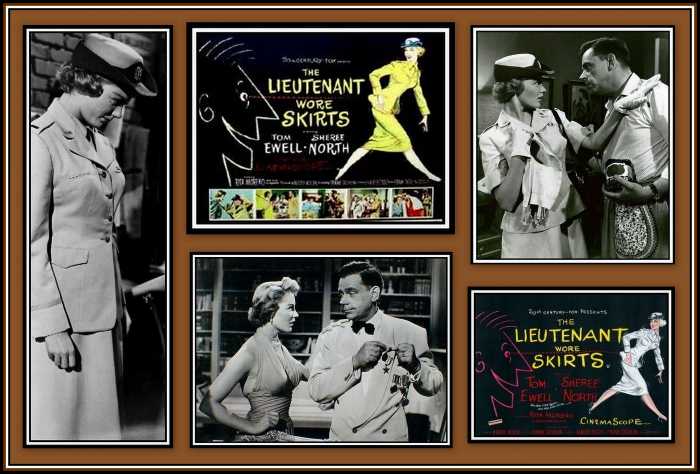
(Click
on the collage to see a
video clip from the film)
The final
film that I saw at the Empress
- and which
has become, in my
opinion, a classic
– well, it is to
me! – was White
Feather. This was one
of the first westerns to
portray its story-line through
the eyes of the Indian. According
to the introduction, the
film was based on a true
story and starred Robert
Wagner, the beautiful
Debra Paget, which was
the reason why I was
travelling to Hackney to
see this film, and
Jeffery Hunter. The film
also starred Eduard Franz
who gave a terrific
performance as the Chief.
His feather bonnet had to
be seen to be believed!
The story tells of the
events surrounding the
signing of the Peace
Treaty between the
Cheyenne Nation and the
United States Government
and the subsequent
displacement of the
Cheyenne from their land.
The chief’s son and
his friend refuse to go
and challenge the Army in
battle. The challenge is
made in a most dramatic
fashion when a rider
gallops up to the Captain
of the troops and flings
down a knife with a white
feather attached. The
challenge had to be
accepted and its
resolution is both tragic
and interesting.

(Click
on the collage to see the
film's trailer ...... in
German!)
I was very
taken with this film and
saw it again a few weeks
later at the Essoldo
Bethnal Green. I went
with my parents who both
enjoyed it. Over the
years, White Feather was
revived periodically and
I went to see it whenever
I knew that it was being
shown. The last time that
I saw this film in a
cinema was at the old Moulin
Rouge cinema in
Headington, which is part
of Oxford. I was in
college and insisted that
my friends see it. They
did and I remember one of
them telling me that this
was one of the best
westerns that she had
ever seen.
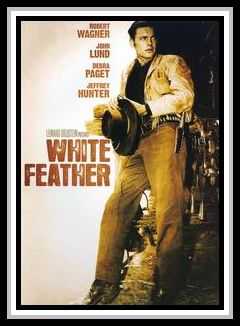 When
so-called film
classics began to
appear on videocassette,
I was horrified that White
Feather was not
amongst them. I remember
writing letters and
sending emails to CBS-Fox
Video demanding that
they explain this
miscarriage of justice.
Eventually in 1994, I
noticed that the
television premier
channel, Cinemax, was
going to present the
film. Although I dislike
intensely these so-called
premier channels, I
immediately telephoned my
cable company and
arranged to have the
service included in my package.
I owned one
videocassette recorder at
the time and immediately
set it to record the
film. Just prior to its
emission, I became
suddenly seized with
panic. What if the
recording failed? I very
quickly ran out and
bought a second machine
and set that for
recording at the required
time too! And just to be
certain, I arranged for a
friend to record it also.
Fortunately I was soon to
have three copies of this
film in my possession.
Although the film was
never released on
videocassette, it was
released a few years
back, at long last, on DVD.
Naturally, I own a
copy – just one!
However the disc contains
two versions of the film
– one is in
so-called regular
format and the other,
in widescreen.
Guess which version I
watch? However, as much
as I liked How to
Marry a Millionaire, the
film that I most favour
from my visits to the Empress
is White Feather. When
so-called film
classics began to
appear on videocassette,
I was horrified that White
Feather was not
amongst them. I remember
writing letters and
sending emails to CBS-Fox
Video demanding that
they explain this
miscarriage of justice.
Eventually in 1994, I
noticed that the
television premier
channel, Cinemax, was
going to present the
film. Although I dislike
intensely these so-called
premier channels, I
immediately telephoned my
cable company and
arranged to have the
service included in my package.
I owned one
videocassette recorder at
the time and immediately
set it to record the
film. Just prior to its
emission, I became
suddenly seized with
panic. What if the
recording failed? I very
quickly ran out and
bought a second machine
and set that for
recording at the required
time too! And just to be
certain, I arranged for a
friend to record it also.
Fortunately I was soon to
have three copies of this
film in my possession.
Although the film was
never released on
videocassette, it was
released a few years
back, at long last, on DVD.
Naturally, I own a
copy – just one!
However the disc contains
two versions of the film
– one is in
so-called regular
format and the other,
in widescreen.
Guess which version I
watch? However, as much
as I liked How to
Marry a Millionaire, the
film that I most favour
from my visits to the Empress
is White Feather.
There is
still one more film that
I wish to introduce in
this tale of my memories
of the Empress
before closing. When I
was a child, cinemas were
still in the habit of
presenting two films
unless the featured film
was of longer duration.
These films, now called B
films, could be good,
sometimes bad, but more
often dreadful. However,
the film that I saw with The
Virgin Queen, although
probably not great in
terms of acting despite
having a good cast,
proved to be quite
influential as the reader
will soon learn.
AFTER
THOUGHT – THE MOON
IS BLUE
Regarding The
Moon is Blue: I
remember thinking the
woman who told me that
she and her boy friend
walked out of the film to
be a total Philistine and
Leper! At my young
age, I was incapable of
understanding how anyone
could walk out of any
film!
I have
walked out of only three
films during my entire cinema-going
days. The first film
that I left before the
end was Henry V
– yes,
Olivier’s Henry
V! The second film
was Tommy – yes,
The Who’s Tommy! I
went to see Tommy
in Amsterdam and the
level of noise gave me a
headache. I also must
confess that after
leaving these films, I
soon became convinced
that had I stayed, the
film would have turned
into a classic and become
a film that I would want
to see again and again.
Although after going to
see Henry V a
second time, I did
realise its merits and
was at a loss to
understand why I had left
early the first time.
Although I had always
enjoyed the films of Ken
Russell, I still did not
find Tommy to be
completely to my taste
once I sat through it in
its entirety. I found it
to be loud and excessive.
However, I do enjoy
the soundtrack, as long
as I am in control of the
volume level!
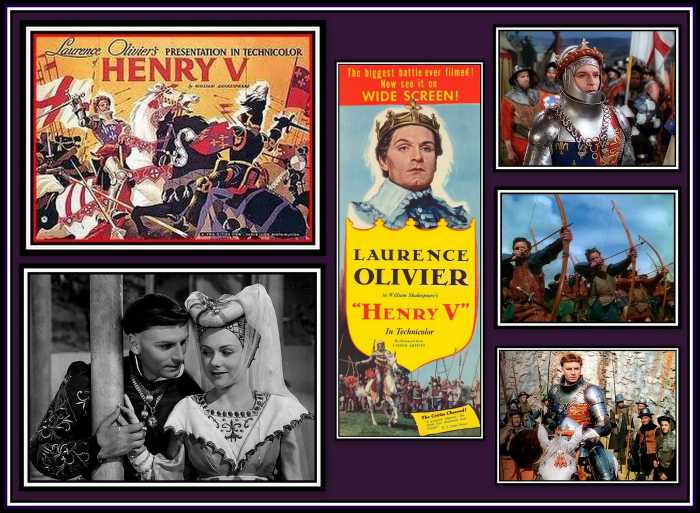
(Click
on the collage for the St.
Crispin's Day Speech)
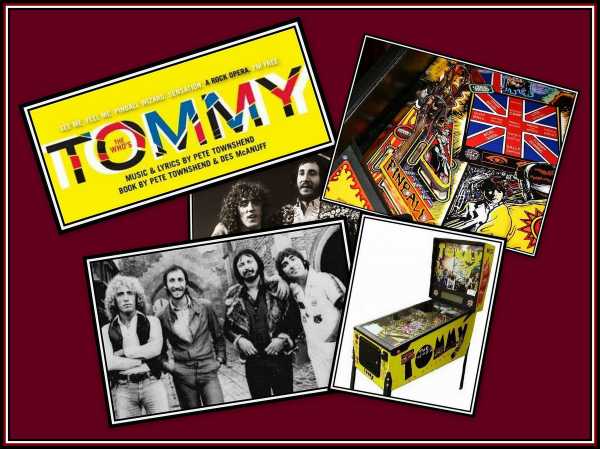
(Click
on the collage to see Pinball
Wizard)
The third
film that I walked out of
was seen at a make-shift
cinema in Didcot on a
cold and wet Saturday
night during my college
days. Some friends and
myself had been studying
all day long and needed
to get out for a while.
So we decided to go out
for a drink or two and
for some unknown reason,
we ended up in Didcot.
One of us suggested going
to the pictures,
which seemed like a good
idea at the time. Since
it was getting late, we
decided to go to the
local cinema. I
don’t think we even
looked at what was
showing. We needed a divertissement,
something to amuse
us, and this we found or
at least I did. I never
did discover the name of
the film, but it was an Italian
sword and sandal film with
unknown actors and poorly
dubbed into American
English. The plot proved
impossible to follow, but
I suspect that our late
arrival might have a role
here. The print was in a
poor state and obviously
had been spliced together
following multiple breaks
on numerous occasions and
the soundtrack was
practically inaudible.
The cinema was cold and
draughty and we could
hear the whirling sound
of the projector above
the soundtrack. The place
was a mess and the seats
were creaky and a number
were broken. We stumbled
in without the help of an
usherette who was too
engrossed in the film to
offer us assistance. We
groped our way down an
aisle and into a row only
to find that my seat was
missing! Eventually I
found a place at the far
end of the row and
settled down to enjoy the
film.
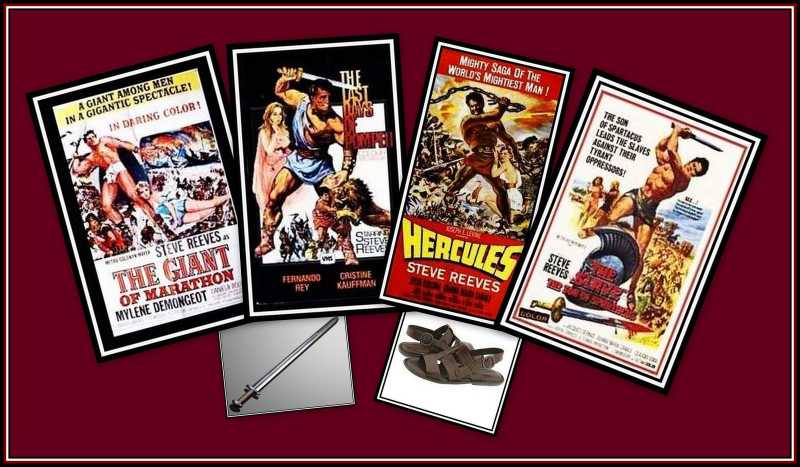
Unfortunately,
my concentration was
periodically broken by foul
language coming from
a patron who had just
found themselves on the
floor. Apparently their
seat had suddenly given
way under their weight
and sent them crashing to
the ground. Their cries
told of their annoyance,
displeasure and probable
pain. Having soon given
up trying to follow the
action on the screen, I
soon found the whole
situation to be very
funny and once I started
to laugh, I could not
stop. I tried everything
I could think of to do so
but failed miserably.
Even a stuffed
handkerchief in my mouth
failed to help minimise
my laughter. Alas, few
members of the sparse
audience appreciated the
situation in the same way
as me and my laughter
seemed to incense some of
the local leather
jacketed brigade present
to express their
displeasure in my
direction. Apparently
they had excellent
hearing and were able to
follow the plot and were
not pleased by the
disruption that I was
causing! As a result, my
companions decided that
retreat was the better
part of valour and
informed me that we were
leaving. I stumbled my
way out of the cinema,
still choking with
laughter as I did. I
remember the usherette
made some unkind
remark as I passed
her on my way out.
Amazingly, immediately the
night air hit me, my
laughter stopped and I
returned to being my old
self once more. I am
still somewhat upset that
I never discovered the
name of the film.
Needless to say, I also
never did get an
opportunity to see it
again, for which I am
deeply thankful.
Regarding The
Moon is Blue: I saw
this film on television
about two years ago. It
was shown on a film
channel and presented
commercial free. I
tell the reader this
since I don’t anyone
to think that my opinion
of the film is based on
having seen a chopped
up and edited
format. It was seen
as originally presented
in cinemas in 1953. As is
the way of Otto
Preminger, the director,
the setting was limited
to the main room of an
apartment and a few
minutes atop the Empire
State Building. The
dialogue was what can
only be described as
reflecting the wit and
sophistication of the
time. What perhaps once
seemed avant garde and
somewhat racy in
the early 1950s, now came
across as dull and
somewhat silly. I owe
that woman, and her man
friend, an apology I
fear, as the film was one
long bore from beginning
to end. Although I wanted
to switch the television
off, I did not! You never
know, one lives in the
hope that an
unpleasing film
might suddenly turn into
a classic!
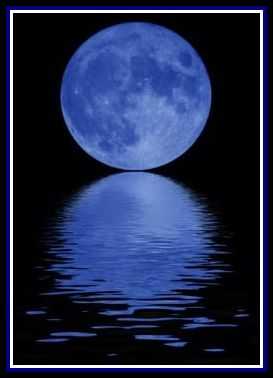
(Click
on the picture)
PHOTO
GALLERY
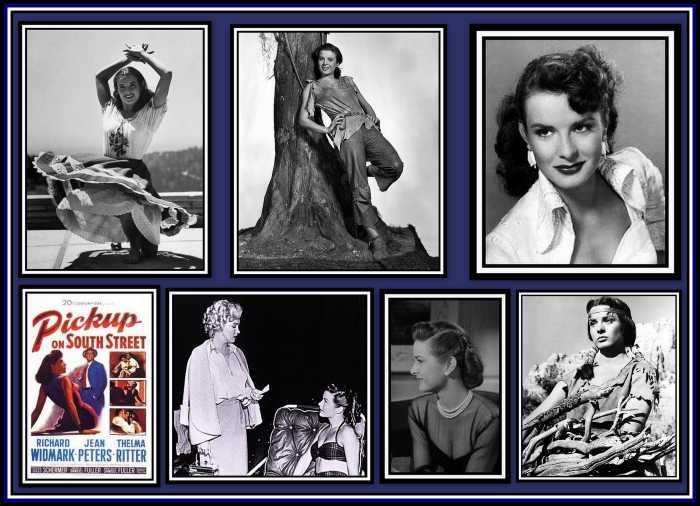
Jean
Peters
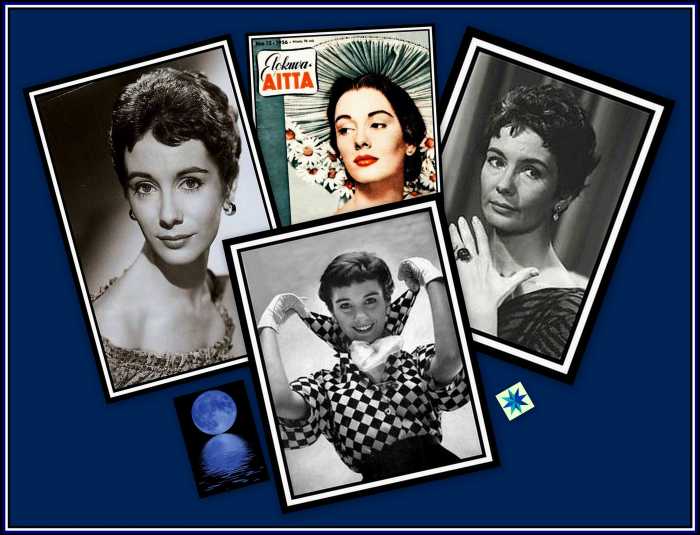
Maggie
MacNamara
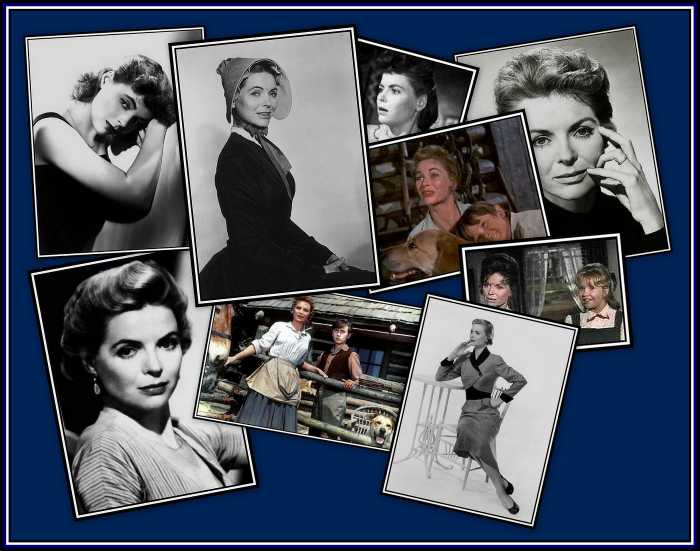
Dorothy
McGuire
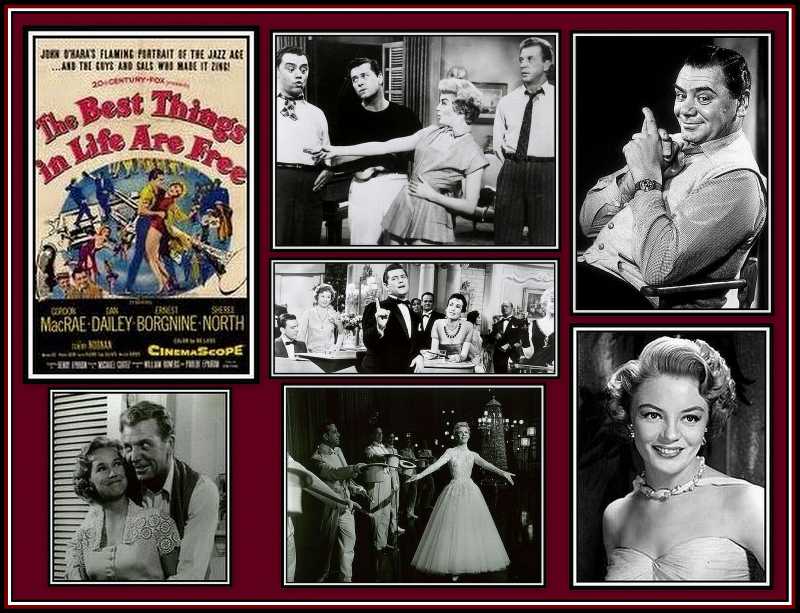
(Click
on the poster to see the
ballet sequence from the
film; click on the
collage to see another
video clip)
I
would like to thank Mr.
Brian Hall for his
kindness in allowing many
of his pictures to be
reproduced here.
|